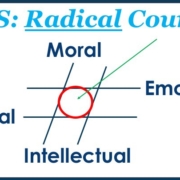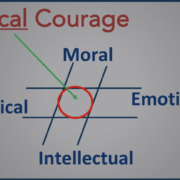Improve the Success of Your Company’s Diversity and Inclusion Programs
Improve the Success of Your Company’s Diversity and Inclusion Programs
by Using Leader Archetypes in These 5 Steps

DIVERSE WORKFORCE
The business case for a diverse workforce, explains the Wall Street Journal, is clear.
Less obvious is how to retain a diverse workforce. According to one study, women are twice as likely as white or Asian men to leave their employer. Black and Latino males reportedly leave at 3.5 times the rate of their white or Asian male counterparts. A lack of inclusivity is often blamed for the turnover. A 2007 report estimates that failed diversity initiatives cost American companies $64 billion annually.
In short, current efforts to hire a diverse workforce may be costing some companies more in employee turnover than the gain in productivity.
THE CHALLENGE
This challenge could be one of the reasons smaller companies seem less likely than larger ones to diversify. Even among larger companies senior leadership and boards still tend to be white and male. This homogeneity is even more troubling considering the emphasis on diversity since before the turn of the century — more than enough time for the rise to senior leadership.
A recent study by McKinsey, a consulting firm, shows that women tend to have their careers derailed early. Most fall behind their male counterparts in the move from entry position into first-line management — the so-called first rung.
Bigotry and misogyny among some managers are no doubt parts of the problem.
Another part of the problem could be the tendency for leaders to clone themselves. This unconscious affinity bias leads people to select and promote others like themselves. Sometimes this bias is based on gender, ethnicity, or religion.
In many cases, though, it is based on an idealized and personalized version of what it takes to be a successful leader. Since the person in the leadership position sees themselves as successful, selecting and promoting similar people is perceived as sound practice. Cloning seems to be a common mistake among relatively inexperienced managers, which may account for the first-rung problems in large companies and poor diversity in smaller companies.
Developing leaders to appreciate a broader range of leadership archetypes could reduce affinity bias and improve diversity and inclusion at more senior levels.
OUR RESEARCH
Our research has led to four major leader archetypes: Pioneers, Reconcilers, Operators, and Mavericks, which we call the PROM leader persona method™. Each archetype has natural inclinations and points of energy. Pioneers are innovators. Reconcilers build teams and manage consensus. Operators create the systems and processes that get things done routinely. Mavericks solve complex, wicked problems. Organizations need them all.
They also have their natural dis-inclinations, or requirements that tend to drain their energy. Pioneers and Mavericks, for instance, can find details to be soul-sucking. Operators and Reconcilers can get bored without clear requirements. Hiring people into roles irrespective of their archetype has a good chance of producing low job satisfaction, rapid burnout, and low perceived fitness for promotion.
A wider appreciation for diverse leader archetypes and the roles that bring out their best can improve the hiring and promotion processes and better set-up women and non-white males for success. Helping people be the best version of themselves will enhance the quality of mentoring and feedback. When added to the very important inclusion training, sensitivity to leader archetypes is likely to improve senior leader diversity.
STEPS TO TAKE
Here are five steps to take:
- Determine your leader-archetype by going through our short self-assessment and explanatory videos. Have your managers do the same so they can have a broader point of view. To gain greater depth, check out our e-book.
- Decide which leader-archetypes are best suited for the different management roles in your company.
- Add leader-archetype to your employee’s skill sets so that you can set people up for success.
- Promote diverse candidates into roles for which they are best suited.
- When you have women or non-white males candidates in roles not aligned with their leader-archetype (companies often do this to give leaders broadening experiences), be sure to put talented, diverse leader archetypes around them.
CONSIDER
Considering leader-archetype in selection and promotion processes is no panacea. Diversity and inclusion challenges are likely to remain as long as people allow affinity bias based on physical or cultural differences to influence them. Deliberately setting up your employees and managers for success by considering their leader-archetype is likely to improve job performance and satisfaction, reduce employee turnover, and enable your company to more fully realize the competitive advantages of a diverse and inclusive team.









